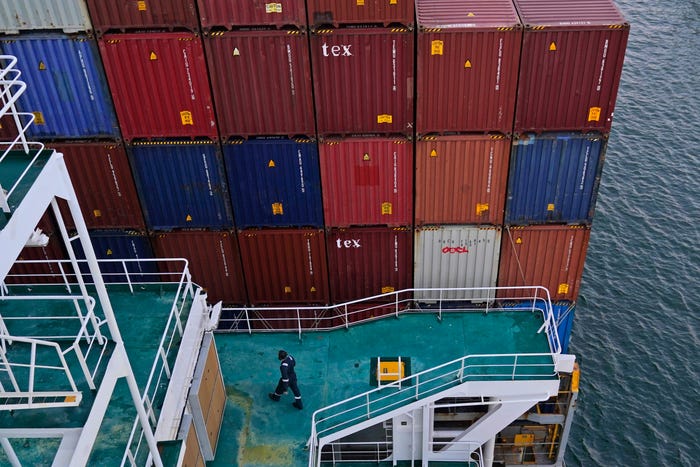Cargo ships used to carry up to 12 passengers on no-frills international voyages. Now, fans of the minimalist travel option are hoping it will start up again soon.
3 min readCargo ships used to carry up to 12 passengers on no-frills international voyages. Now, fans of the minimalist travel option are hoping it will start up again soon.

- Before the pandemic, about 4,000 passengers a year sailed with commercial cargo ships.
- While the cruise industry has largely returned, cargo travel mostly remains suspended.
- The lack of bookings puts some specialist travel agencies in dire financial straits, WSJ reports.
For author Doug Walsh, in Seattle, the 19-day voyage he took with his wife across the Indian Ocean on an Evergreen-owned container ship in 2015 was “almost like a work retreat,” he told The Wall Street Journal.
Walsh and his wife were two of almost 4,000 passengers who booked a minimalist but spacious room on a commercial cargo vessel to travel the globe.
“We really enjoyed it,” Walsh told The Journal. “But I will say, after two weeks, we had had enough. We wanted off the boat by then.”
Other travelers, including Ward Hulselmans, a former television screenwriter from Belgium, have made multiple journeys and see the lack of amenities as a feature, not a bug.
“You learn to be happy with fewer things: You can live without the radio. You can live without music or the internet or chatting or Instagram,” Hulselmans told The Journal. “It’s possible, and not as bad as people think.”
YouTuber Tal Oran cautioned in a video guide to cargo cruising that passengers were one of the lower priorities for the crew, and that the voyages weren’t the most family-friendly ways to see the world.
“This is not supposed to be in any way shape or form a substitute for a plane. This is an experience that you go on to try and travel in a different way,” Oran said.
Before the pandemic hit, some cargo carriers offered passage for up to 12 travelers (the most allowed without a doctor on board) for a cost of about $100 to $150 per day.
The fare typically included lodging and three meals a day, and voyages usually lasted between 40 and 50 days. Some travelers opted for segmented trips that lasted a few weeks, leaving on a boat, disembarking at a port, and returning home by plane.
Accommodations were often in officer cabins, meals were served in the officers’ dining quarters, and some ships had a small gym or a library with books and DVDs to borrow during the stay, as Ben Mack reported for Insider in January 2020.
It’s a far cry from the tens of millions of passengers who travel each year on conventional cruise lines, but the niche industry still supports a handful of specialist travel agents who told The Journal that continued COVID-19 restrictions were squeezing their businesses, with one New Zealand company predicting near bankruptcy by April.
Still, while pre-pandemic cargo travel had tremendous uncertainty around departures and arrivals, the current global supply chain is in no real shape for ride-alongs, especially at ports such as Los Angeles and Long Beach, where more than 100 vessels are stuck offshore waiting to unload.
Read more about the container-ship cruise industry over at The Wall Street Journal.



